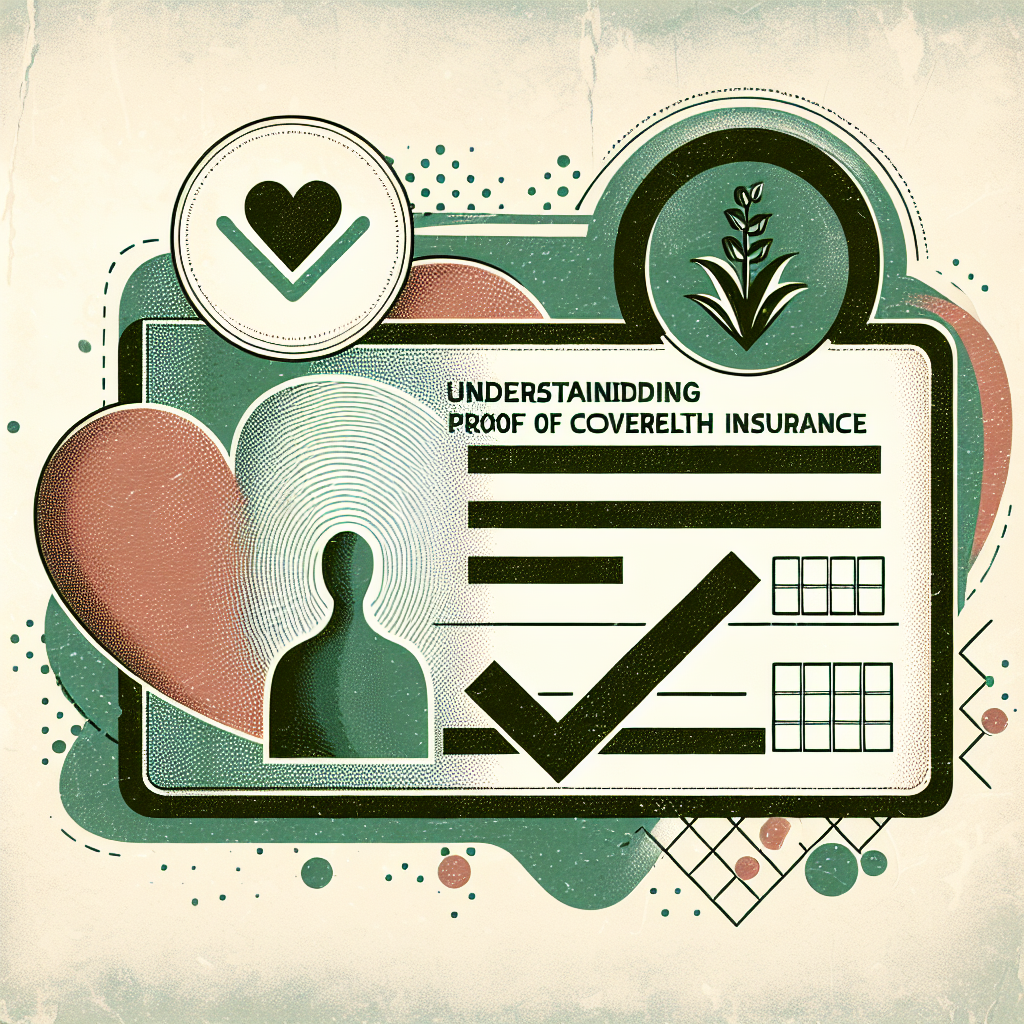Filed under Health Insurance on
Understanding Proof of Coverage in Health Insurance

Health insurance is an essential part of managing health care costs and ensuring access to necessary medical services. One critical aspect of health insurance that both consumers and providers need to understand is the "Proof of Coverage." This article will delve into what proof of coverage entails, why it is important, and how it impacts various stakeholders in the healthcare ecosystem.
What is Proof of Coverage in Health Insurance?
Proof of coverage in health insurance is a document or set of documents that verify an individual's or a group's active medical insurance status. It essentially serves as verification that a person has a valid health insurance plan, which can be crucial for accessing healthcare services and avoiding penalties under certain legislations.
The Components of Proof of Coverage
- Policyholder Information: Details about who the insurance covers, including names and identification numbers.
- Insurance Details: Information about the insurance provider, policy number, and coverage start and end dates.
- Coverage Summary: An outline of what the insurance covers, including benefits and any exclusions.
Importance of Proof of Coverage
Proof of coverage plays a significant role in several areas, including validating coverage when visiting healthcare providers and ensuring compliance with healthcare regulations. Understanding proof of coverage also helps policyholders gain better insights into their benefits and limitations.
Compliance with Health Regulations
In many countries, understanding proof of coverage is essential for complying with national health mandates. For example, the Affordable Care Act in the United States mandates certain insurance requirements; having proof of coverage helps individuals avoid penalties. This underscores the regulatory importance of verifying one's health insurance status.
Facilitating Access to Healthcare Services
When visiting a doctor or medical facility, verifying proof of coverage ensures that the services rendered will be covered by the insurance provider. It helps in avoiding upfront payments and confirms to healthcare providers that they will receive payment for their services.
How to Obtain Proof of Coverage
Most insurance providers offer various ways to acquire proof of coverage. Understanding these methods ensures that policyholders have access to this vital information when needed.
Online Portals and Mobile Apps
Many modern insurance companies offer online portals where policyholders can download proof of coverage. Mobile apps also make it easy to access these documents on the go, sometimes providing instant updates about any changes to coverage.
Physical Documentation
For those who prefer physical copies, requesting proof of coverage directly from the insurance company remains an option. Insurers typically mail these documents to ensure they meet regulatory requirements and customer needs.
Proof of Coverage Trends in the Healthcare Industry
The healthcare industry continually evolves, and staying informed about emerging trends related to proof of coverage can be beneficial. Understanding these trends helps policyholders and providers navigate the complexities of modern health insurance.
Increased Digitization
The trend towards digital proof of coverage continues to surge. With more states approving digital verification methods, expect to see greater acceptance of digital documents across healthcare facilities. This could simplify the process for both patients and providers, ensuring smoother transactions.
Enhanced Security Measures
As digital proof of coverage becomes more prevalent, security measures are also improving. Many insurers are employing blockchain technology and advanced encryption to protect personal information, reducing the risk of fraud and ensuring data integrity.
Expert Opinions on Proof of Coverage
Industry experts stress the importance of maintaining accessible and accurate proof of coverage. John Doe, a leading health insurance analyst, argues that "Ensuring easy access to proof of coverage allows policyholders to fully utilize their benefits and understand their policy limits better." The emphasis on transparency and accessibility continues to grow, making it vital for both policyholders and providers to stay informed.
Challenges with Proof of Coverage
Despite its importance, there are challenges associated with proof of coverage in health insurance. Identifying and addressing these challenges is crucial for improving the efficiency and reliability of coverage documentation.
Administrative Confusion
Handling proof of coverage can sometimes lead to administrative confusion, especially if policyholders switch plans frequently or have complex coverage needs. Consistent communication between insurers and policyholders is important to minimize misunderstandings.
Timeliness and Accuracy Issues
Ensuring that proof of coverage is both timely and accurate can be challenging. Delays in updating coverage information can lead to denied claims or unexpected costs. Staying vigilant and proactive in monitoring coverage status can help mitigate such issues.
Conclusion
Understanding proof of coverage in health insurance is vital for policyholders and providers alike. With its role in accessing healthcare services and complying with regulations, having a comprehensive grasp of proof of coverage ensures an efficient and transparent healthcare experience. Staying informed about emerging trends and overcoming associated challenges can enhance the overall effectiveness of health insurance systems, benefiting all involved stakeholders.





